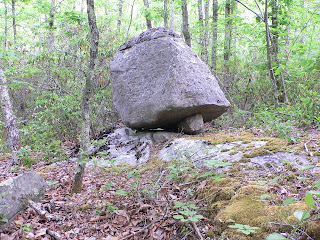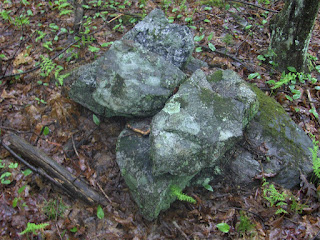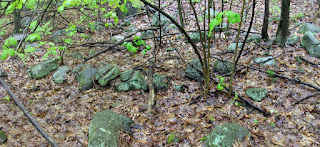I must respond to the April 25 letter by Pete Carlson "Just piles of rocks" and the May 4 letter by Mike Martel "Not very much science in this archaeological fishing expedition."
I have to question what credentials Messrs. Carlson and Martel possess to make such judgments regarding the mounds. I am quite certain neither has seen them, as access to the site is gained only through the North Smithfield Conservation Commission with the express consent of the landowners.
There are more than 100 of these mounds on approximately two acres, certainly not indicative of a farmer's clearing of fields. As for what sort of a "knucklehead developer" would drive percolation pipes through these mounds, I can't answer, but there are indeed several in this condition.
Here are the facts:
1. Nipsachuck has long been considered a sacred site by the Wampanoags as confirmed by historic accounts of colonists' failed attempts to purchase the land from Sachem Massasoit.
2. Written colonial accounts describe two battles fought at Nipsachuck during King Philip's War in 1675-76 during which many Native Americans were killed.
3. Members of the Seaconke Wampanoags, including the chief and the tribe's historian, have visited the site and they confirm that the mounds are typical of Native American burials of the past.
4. A representative of the Rhode Island Historical Cemetery Commission has been to the site and confirmed them to be burial mounds and the site has been duly registered with the State of Rhode Island.
5. Professors Frederick F. Meli from URI and William S. Simmons from Brown University, experts in the fields of anthropology and archaeology, have investigated the site and declared the mounds to be Native American in origin dating from 300 to 2,000 years old.
6. Artifacts including arrow points and ax heads have been retrieved from the rubble of several of the mounds that have been previously disturbed. Based upon the size, shape, distribution of the stones, the directional orientation and the presence of stones not indigenous to the locale, the only logical conclusion is that they are indeed Native American in origin.
The proper steps are being taken with the cooperation of the landowner, the Wampanoags, North Smithfield Town Council and all others involved to conduct urther studies in order to preserve and protect this very important site.
PAUL H. SOARES
North Smithfield
The writer is the vice chairman of the North Smithfield Conservation Commission.

 Norman also adds, "That first image of the white perched boulder in a desert environment could be what is called a tor, which is a highly weathered outcrop that looks manipulated. Such forms are found in southern England, and are sometimes located near dolmens. One researcher believes that the dolmen form was inspired by the natural tor formation."
Norman also adds, "That first image of the white perched boulder in a desert environment could be what is called a tor, which is a highly weathered outcrop that looks manipulated. Such forms are found in southern England, and are sometimes located near dolmens. One researcher believes that the dolmen form was inspired by the natural tor formation."

















































